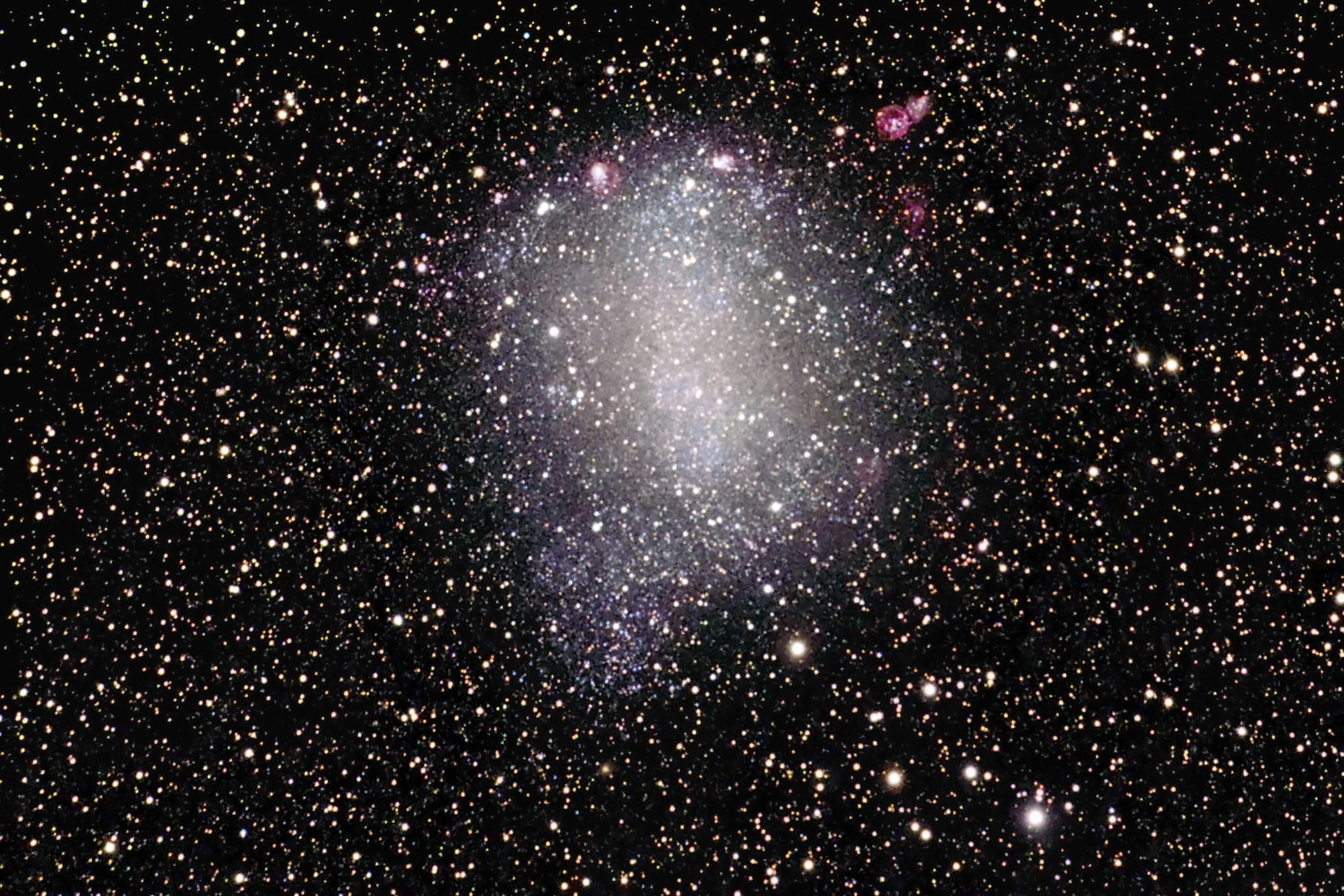| Description | Images |
Object name: NGC6822Designation(s): NGC6822, This is a shot of a galaxy in our local group, NGC 6822, commonly known as Barnard's Galaxy as he discovered it with a 6" refractor over 120 years ago. Located about 1.7 million light years away it is a dwarf galaxy. Oddly, it shows little rotational motion, especially in the outer regions. It is full of bubbles blown by newly formed star clusters. The biggest and brightest is actually called the Bubble Nebula, not to be confused with a very different Bubble Nebula formed by a dying star in our own galaxy that I've run here twice before. This is caused by a cluster of super massive, super hot stars that formed out a a cloud of hydrogen gas. Then their intense light blew an ever expanding bubble in the remaining hydrogen. In a few million years the bubble will have expanded so much and so many of the stars that formed it will have gone super nova that it will vanish. This bubble is huge compared to those known in our galaxy. Most of which are 30 or so light years across. This one is about 500 light years in diameter! To be illuminated by stars 250 light years distant you know those stars are super bright!! Actually, this galaxy has many such bubbles, far more than most dwarf galaxies have. NGC 6822 is thought to be very similar to the galaxies that first formed in our universe and which then combined to form more massive galaxies such as our own. Though why it still has so much dust and gas left is somewhat of a mystery. Since we see this galaxy through the dust of our own galaxy it is greatly dimmed and reddened. It would be far bigger and brighter if it was located in a direction looking out of our galaxy rather than into it. Related Designation(s):11HUGS 405, 2MASX J19445619-1447512, 2MASXi J1944561-144805, CGS 540, DDO 209, HIPASS J1944-14, IC 4895, IRAS 19420-1450, IRAS F19420-1450, MCG -02-50-006, NGC 6822, NGC6822, PGC 063616, [SPB93] 261, |
